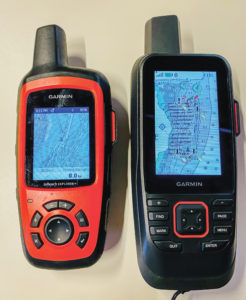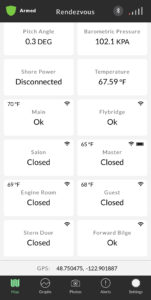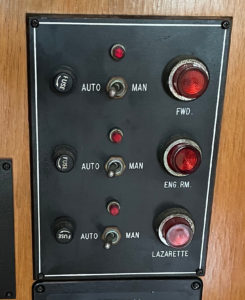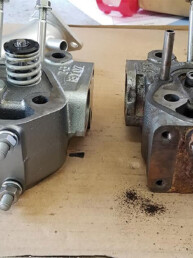This article was originally published in the March 2022 issue of 48° North
A great thing to do at least once a year, and especially prior to the start of a more active boating season, is to give your boat a tech checkup. Just like your engine, sails, and other systems, spending some time testing your tech systems is an excellent way to ensure trouble-free time on the water.
Software & Charts

Having up-to-date charts is important for a variety of reasons, primarily because of safety when navigating. Ensuring that you have the latest information on obstructions, changes to channels and lights, depths in tight passages and everything in between means that you can navigate with confidence. It is also a requirement by most governments and agencies that you carry the most up-to-date chart information for this very reason, so keeping them updated should be on the top of your checkup list.
So many parts of our boats have software on board now, such as inside a chartplotter, on a PC, or elsewhere. Checking to see if there are updates for the software on your chartplotter is necessary to keep it running smoothly, and take advantage of new
features and functionality.
Keep in mind that updating your charts can require a more powerful internet connection given the size of chart updates, so doing this at home may be a better choice than aboard the boat. In some cases, it can also require software upgrades to support new charts, using mobile devices to download things ahead of time, or even working with a vendor to get newer charting.
This year in particular, a lot of things have changed in the charting world, with the retirement of United States Coast Guard paper charts and the purchase of Navionics by Garmin — and resulting changes with access to those charts by existing vendors. All of these transitions make it doubly important to check with the manufacturer of your chartplotter or software, and make any upgrades or updates to whichever type of chart you rely on.
VHF & Communication

Even with the proliferation of smartphones and coverage in many of the areas we cruise, your VHF radio is a critical piece of safety equipment that always needs to be reliable and working. Checking both fixed mount and portable radios is an essential step, but you should also be doing this frequently throughout the year, and ideally before you leave the dock every time.
A good VHF checkup includes verifying both transmit and receive, that DSC (Digital Selective Calling) and GPS are working correctly on any DSC-capable radio, and doing a battery check on any portable handhelds by running them for a while. When doing a transmit test, make sure you follow good radio etiquette and use a non-emergency channel to test things. I find arranging a time with a cruising friend in the same marina or area to be a helpful way to test radios and work through any issues.
Other communication systems aboard might include satellite systems, internet routers, and location trackers. This is a good time to check on your subscription plan for your tracker(s) and ensure it is up to date and activated, and to run some tests with the tracker or satellite systems to ensure alerts and coverage are working.
Spring is also a great time to look at a SIM card or data plan, and make sure that you have the coverage for the areas you’ll be cruising in. There are always newer and better plans for all of these devices announced at least yearly, if not more frequently, and you could end up saving money and expanding your capabilities just by checking with the vendors you use.
Electrical System
Your electrical system is critical to enjoying your tech life on the water, and ensuring it is up to the task is definitely a checkup item to include. A great way to do this is to step the boat through the usual “modes” that it would be in away from the dock. This includes unplugging or turning off shore power and monitoring amp loads and battery performance, running the generator at full load to charge things, and running large draw items like windlasses and davit cranes while doing these things to make sure you don’t need any unexpected maintenance or fixes before you leave the dock.
This is a perfect time to check all connections and terminals on batteries, chargers, alternators, and starter motors for main engine(s) and generators and ensure that there is no corrosion and that they are tight and looking good.
In the April 2021 issue of 48° North I wrote about how to test and document your electrical system, which gives advice for a deep-dive into your system that will enhance understanding of it at all stages.
Monitoring & Safety Systems

Many vessels have remote monitoring systems that allow you to check on your boat health from your phone, tablet, or computer using a website or app. In addition, lots of boats have various analog displays aboard including bilge pump indicator lights, high water alarms, fire alarms, and more. All of these systems should be tested regularly, and especially before using the boat at the beginning of the season if it has gone mostly (or completely) unused over the winter.
A good set of steps for a checkup of remote monitoring systems is to trip every sensor, switch, or pump, and ensure you’re still getting alerts or other triggers that you expect. These systems don’t offer any value if they don’t tell you when things are wrong, and I find they are really important for the day after being out on the water for something you’ve forgotten.
Testing bilge pumps is pretty easy — tripping the float is a great way to do it quickly, but I also like dumping a bucket of fresh water into the bilge upstream of a pump and seeing if things work that way as well. The same method (with more buckets of course) could be used to test high water alarms, if you’re fast enough!
Fire alarms are a bit more complicated to test, and in some cases with heat detectors, you might not be able to test the actual sensor itself as it’s driven by high heat amounts. However, fire alarm systems are usually wired in parallel so that if a sensor or device is disconnected, the entire system goes into alarm or alert so you can investigate. Smoke detectors can be tested using a test button on the front of the device for more modern versions, and you can buy aerosol “test smoke” for engine room smoke detectors.
Testing and checking on these items, and more, can be the difference between fun, safe, and comfortable cruising and being stuck to the dock waiting for repairs…or worse.






